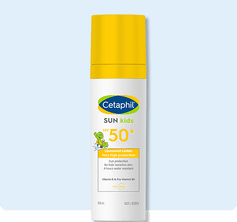Sun Protection
In their first few months, babies are much more sensitive to sun exposure than adults and older children. Their skin contains little melanin, the pigment that gives colour to skin, hair and eyes and provides some sun protection.
The best ways to keep infants sun safe are with shade and clothing.
Clothing is the first line of defence against skin cancer, and dressing babies in lightweight clothing that covers their arms and legs is a great first sun protection step. Then add on a wide-brimmed hat that covers the baby’s face, neck and ears — putting a child in a hat during their first few months will help them get used to having one on. (Bonus: they’ll look super cute!) When you’re on the move, use a stroller with a sun-protective cover and do your best to schedule walks before 10 AM and after 4 PM, avoiding strong midday sun. While traveling in the car, try a removable mesh window shield to block sunlight from reaching your little one. Yes, some damaging rays penetrate glass.
No matter what, never allow a baby to get a sunburn. In infants, sunburns can be a medical emergency, with the potential to cause fever, dehydration, blisters and chills.
Time for Sunscreen
Once your baby is 6 months old, it’s time to introduce sunscreen. This doesn’t mean it’s OK to forget all the other sun protection methods you’ve been using with your baby — covering up with clothing and seeking shade are still important. But as your baby gets older and you spend more time outdoors, sunscreen will help protect exposed skin, like the hands and face. Choose a broad-spectrum sunscreen (meaning it protects against UVA and UVB rays) with an SPF of 30 or higher. Look for sunscreens with zinc oxide and titanium oxide.
(Formerly called Daylong)
